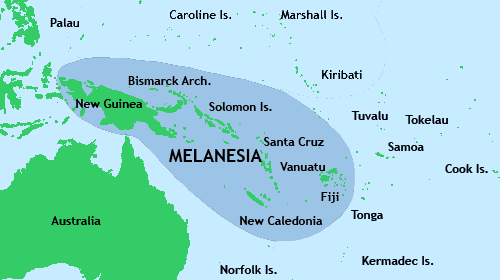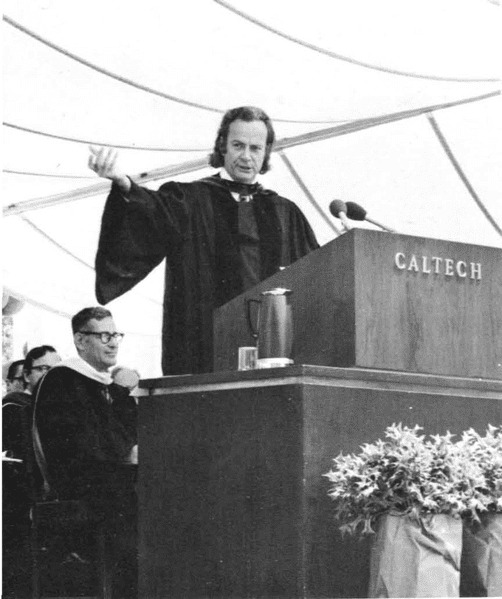Throughout history when European civilization clashes with indigenous cultures bizarre episodes often ensued. For such illustrations, you need not look any further than the so-called ‘cargo cults’ of Melanesia, a subregion of Oceania that encompasses Fiji, Vanuatu, the Solomon Islands, and Papua New Guinea. But what are these cargo cults?

Imagine dozens of bare-chested men marching solemnly and purposefully in formation through the rainforest, bamboo poles on their shoulders.
They head towards a clearing in the forest, stopping and marching in response to commands shouted by a tribal elder. They eventually reach their destination, a long and barren piece of land that looks a lot like a landing strip.
They’re flanked by a bamboo structure that looks mighty similar to a control tower on one side, and a radio dish made entirely of sticks and mud on the other. There’s even a wooden replica of an aircraft, with no chance of ever taking off despite the resemblance.
Some of the men now start lighting torches, carefully placing them across the strip, while others wave their torches as if they’re signaling.
All attention is now directed towards the sky in tense anticipation of the ‘gods from the sky’ who will bring riches on their metal-winged ships. But, again, no one comes.
Such odd scenes were highly common among the Southern Ocean natives, though they aren’t necessarily manifested purely in that part of the world. They’re the result of pre-industrialized societies interpreting technologically sophisticated foreigners as supernatural figures who were blessed with the power to summon material wealth out of thin air.
When this misunderstood technology disappeared from their lives, natives would develop complex religious rituals that mirrored the previously observed behavior of the visitors, without truly understanding the real nature of those behaviors.
For anthropologists, a cargo cult is any religious movement that exhibits the strong belief that material wealth (manufactured goods or any ‘cargo’) can be obtained through ritual worship that imitates foreign behavior. However, there’s more to it than just praying for wealth to fall from the sky, as you shall see.
Turning tech into worship through imitation

The term ‘cargo cult’ was first coined by the Pacific Islands Monthly, which in a November 19, 1945 issue published a story about the troubles faced by post-war New Guinea Natives following their reckless exposure to Western culture and Christian missionaries.
“Stemming directly from religious teaching of equality, and its resulting sense of injustice is what is generally known as Vailala Madness, or Cargo Cult.”
“We have seen grave harm to the native population arising from the Vailala Madness, where livestock has been destroyed, and gardens neglected in the expectation of the magic cargo arriving. The natives infected by the “Madness” sank into indolence and apathy regarding common hygiene, with dire effect on the health of the community.”

During WWII, Melanesia was swept by over a million American troops, most of whom were white. The natives, many of whom had never encountered a foreigner or manufactured goods, gazed upon them with astonishment as “cargo” — meaning Western manufactured goods — dropped from the sky, which was hauled on carts that moved at ferocious speeds although there was no animal or person pushing them.
Over the course of the Pacific War, many natives who acted as guides and hosts were gifted clothing, food, and even weapons. In a very short while, they became highly reliant on these goods, but when the war came to an abrupt end, the airbases closed down and the ‘cargo’ stopped coming.
In the wake of this mass disappointment and chaos, religious figures or prophets immediately appeared, each founding their own ‘cargo’ sect which promised to explain the confusing realities of their post-contact lives and offer comfort.
Some of these sects adopted elaborate rituals that superficially mimicked the contraptions and practices they witnessed performed when the airdrops were a regular occurrence.
Whenever no cargo came, the obvious explanation was that there was something wrong with the sequence of rituals, a failure of magic, so they tried again and again. Once a sect was fed up with staring at the empty sky, new breakaway sects founded by new prophets promising cargo redemption would pop up.

Anthropologist Peter Lawrence captures the essence of the cargo cult in his landmark study Road Belong Cargo. Here’s an excerpt:
“What,” I asked, “is the purpose of this airstrip?” “To fly in your cargo and ours,” came the embarrassed reply. It eventuated that the expected cargo consisted of tinned meat, bags of rice, steel tools, cotton cloth, tinned tobacco, and a machine for making electric light. It would come from God in Heaven. The people had waited for it for years but did not know the correct procedures for getting it. This was obviously going to change. They now had their own European, who must know the correct techniques and had demonstrated his goodwill. I would “open the road of the cargo” for them by contacting God, who would send would send their and my ancestors with goods to Sydney. My relatives living there would bring these goods to Madang by ship and I would distribute them to the people. An airstrip would eliminate the labour of carrying.”
Although cargo cults appeared most prolifically during and after WWII, the first instances of such ritualistic mimicry appeared in the late 19th century, which saw an intensification of colonialism in Melanesia.
These movements included elements like anti-colonialism, millenarianism (the belief in a coming fundamental transformation of society), the spiritual exaltation of Western material goods, or some combination of the three as a response to encounters with colonialism and Christian missionaries.
German, Dutch, British, French, Japanese, and American visitors all succeeded each other, and every time a new cargo cult would spring up to explain the natives’ newfound shocking realities.
For instance, the millenarian flavor is exemplified by the widespread belief that a peaceful age was about to arrive very soon into the future, one in which there would be no more poverty and everyone would be rich with cargo. But before this peaceful age, one of destruction would have to befall them first, a sort of apocalypse mythology that is virtually universal in all cultures.
Furthermore, the ‘white men’ would be driven from their lands (the anti-colonialism), or alternatively, their skin would turn white, its true color that had been obscured until then due to a Western plot.
Although the Melanesians had complex social and religious organizations and were very crafty with their maritime and agricultural activities, all their technology was based on wood and stone. The disparity between what was basically Stone Age tech and modern machines must have been incomprehensible.
In this situation, the words of science fiction writer Arthur C. Clarke are incredibly prescient. In 1962, in his book “Profiles of the Future: An Inquiry into the Limits of the Possible”, Clarke formulated his famous Three Laws, of which the third law is the best-known and most widely cited: “Any sufficiently advanced technology is indistinguishable from magic.”
These expectations partly explain the self-destructive behaviors that are so widespread among these sects. Very often, whenever a white traveler, explorer, or scientist ventured into remote New Guinea, the natives would quickly butcher all of their pigs and other livestock, their only source of sustenance.
In some cargo sects, the sacrifice of these valued animals would bring three days of darkness in which “Great Pigs” would show up in the sky. Of course, as long as they properly erected wireless antennae made from bamboo and rope.
Some of the most known cargo cults include the “Taro Cult” of New Guinea, the “Vailala Madness” of Papua, the “Naked Cult” of Espiritu Santo, the “John Frum Movement” of the New Hebrides and the “Tuka Cult” of the Fiji Islands.

It would be wrong, however, to smugly point the finger at the poor Melanesians. After all, cults of this general kind are in no way, shape, or form peculiar to the Southern Ocean. As British sociologist Peter Maurice Worsley explained in a 1950s Scientific American article:
“Men who feel themselves oppressed and deceived have always been ready to pour their hopes and fears, their aspirations and frustrations, into dreams of a millennium to come or of a golden age to return. All parts of the world have had their counterparts of the cargo cults, from the American Indian ghost dance to the communist-millenarist “reign of the saints” in Munster during the Reformation, from medieval European apocalyptic cults to African “witch-finding” movements and Chinese Buddhist heresies. In some situations men have been content to wait and pray; in others they have sought to hasten the day by using their strong right arms to do the Lord’s work. And always the cults serve to bring together scattered groups, notably the peasants and urban plebeians of agrarian societies and the peoples of “stateless” societies where the cult unites separate (and often hostile) villages, clans and tribes into a wider religiopolitical unity.”
Throughout the decades due to increasing contact with Westerners and the industrialization of Melanesia, almost all cargo cults have now disappeared. One of the only cargo cults that are still enduring is the John Frum movement dedicated to a ghostly American messiah that promises planeloads and shiploads of cargo to its followers from America if they pray to him.
Cargo Cult science and the crisis in research

The cargo cult can also be a metaphor for the superficial imitation of a process without a basic understanding of its mechanism. For instance, a web developer may employ cargo cult programming by implementing a bit of code that allows the program to work as intended despite the fact the programmer has no idea of the reason why that code needs to be included.
Virtually any type of career has its own cargo cultists that copy others without actually understanding the rationale behind it — they just know it works. Not even the field of science is spared. Indeed, much of the pseudoscience known to us throughout history can be classed as cargo cult science, a term first used by the prestigious physicist Richard Feynman during the 1974 commencement address at Caltech.
“In the South Seas, there is a cargo cult of people. During the war, they saw airplanes land with lots of good materials, and they want the same thing to happen now. So they’ve arranged to imitate things like runways, to put fires along the sides of the runways, to make a wooden hut for a man to sit in, with two wooden pieces on his head like headphones and bars of bamboo sticking out like antennas—he’s the controller—and they wait for the airplanes to land. They’re doing everything right. The form is perfect. It looks exactly the way it looked before. But it doesn’t work. No airplanes land. So I call these things cargo cult science, because they follow all the apparent precepts and forms of scientific investigation, but they’re missing something essential because the planes don’t land,” reads an excerpt from Feynman’s speech, which was later incorporated in his iconic books Surely You’re Joking, Mr. Feynman!.
Just like Southern Ocean islanders build mock airports that don’t produce any aircraft or cargo, cargo scientists produce research that only superficially resembles the scientific method without actually producing meaningful results. Feynman referred to such work as “theories that don’t work, and science that isn’t science.”
Examples of cargo cult science include homeopathy, crystal healing, or the alleged aphrodisiac effects of rhino horns. These are quite obviously flawed examples, but sometimes cargo cult science can manifest itself within mainstream academic circles.
Feynman liked to give the example of the oil-drop experiment by Robert Millikan from 1909. The experiment involved the use of an electrical field to counteract the effect of gravity on a tiny, electrically charged droplet of oil, effectively making the oil float in the air.
By using droplets of different known sizes, Millikan was able to measure the electrical charge of an electron. It’s a beautiful experiment and a powerful demonstration of the forces of nature, one that has been repeated by generations of physics students.
There was only one problem with the oil-drop experiment: Millikan’s results were wrong. Not by much, only by a factor of one part in 150 due to a miscalculation of the air viscosity, but still wrong nevertheless.
When others repeated this experiment using identical equipment without making the same air-viscosity error, they obtained results that ‘disagreed’ with the great professor.
Here’s the odd thing though: the results that most disagreed with the original finding (which were actually the closest to the correct value) were the most likely to be disregarded. It took scientists many years to accept that Milikan was wrong, blinded by their own biases and perhaps feelings of embarrassment at having to challenge such a prestigious figure as Milikan.
Feynman adds that what cargo cult science lacks is “a kind of scientific integrity…that corresponds to a kind of utter honesty–a kind of leaning over backwards. For example, if you’re doing an experiment, you should report everything that you think might make it invalid–not only what you think is right about it….Details that could throw doubt on your interpretation must be given, if you know them….If you make a theory, for example, and advertise it, or put it out, then you must also put down all the facts that disagree with it, as well as those that agree with it.”
Today more than ever science risks getting hijacked by cargo cults as the way research funding is structured incentivizes scientists to hype up applications.
The antidote to pseudoscience is simply to behave with integrity while always maintaining a healthy dose of skepticism, ready to challenge supposedly established facts.
Scientists can never fall into the trap of cherishing theories just because they’re old or put forth by a brilliant person like Einstein — because then science stops being science and starts being a cult.
One more thing before you go. Be sure to watch the short animated film Cargo Cult by Bastien Dubois. It’s only 10 minutes and it’s quite brilliant.


